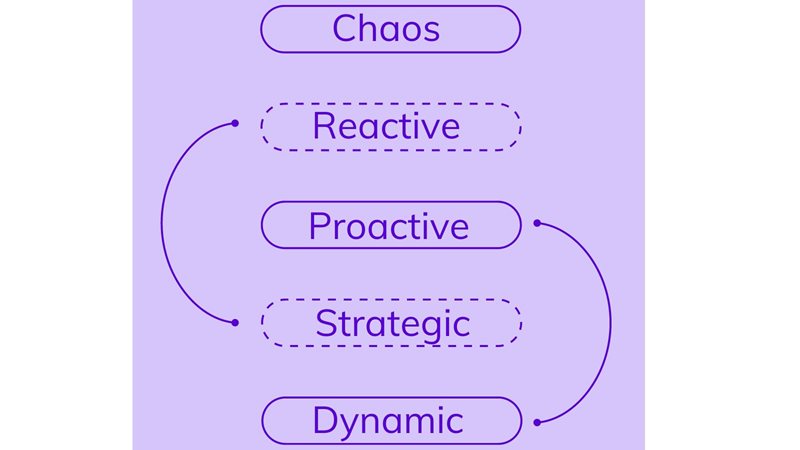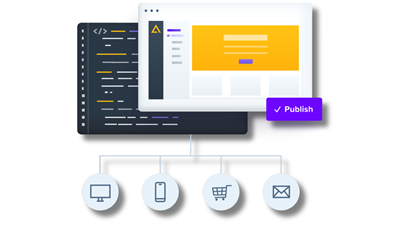How Content Architecture Enables Content Maturity


Digital communication is centred on content, which is essential for helping businesses create and maintain a solid online presence. In the modern digital era, content now includes various media formats, including photographs, videos, blog posts, and social media posts and text on a website.
Unfortunately, many businesses need help to successfully manage, produce, and disseminate content due to the expansion of digital material. Organizations turn to content architecture, a process for efficiently working their content ecosystem, from the tiniest content building blocks to the largest content pieces. We'll look at how content architecturepromotes content maturity in this post and why mature content organizations have specified content architectures.
The cornerstone of content maturity is content architecture.
Content architecture is the organization, structure, and labelling of content in a way that facilitates effective content management and reuse. Content architecture segments content into smaller building blocks, specifying connections between them, developing a taxonomy aligned with organizational objectives and user requirements, managing content, and scaling it.
Content architecture creates the foundation for a scalable content ecosystem, enabling content maturity. As a result, businesses can communicate consistently over their digital channels, including websites and social media platforms. In other words, the content architecture enables a company to develop a content strategy that can change along with the rapidly evolving digital environment, resulting in a more formed content organization.
The Content Maturity Model
The Content Maturity Model evaluates an organization's capacity to produce, handle, and distribute quality content. The model was created by Content Science, a company specializing in content strategy and intelligence. It results from years of study and consultation with businesses of various sizes and sectors.

The five levels of the Content Maturity Model correspond to different stages of content maturity. As a company advances through the levels, its approach to content evolves, and it becomes better at using content to further its corporate objectives. The Content Maturity Model has five levels, which are as follows:
Chaos:
When an organization is chaotic, it lacks a clear content strategy and manages its content haphazardly. The tone, style, and format are inconsistent, and content may be duplicated across different media. Instead of following a long-term strategy, content is frequently produced in reaction to urgent needs.
Reactive:
An organization has started to understand the value of content at the reactive level, but its strategy is still entirely reactive. Little team coordination or collaboration exists as content is produced in response to particular business needs. The style and tone of the content may be more consistently consistent, but there is still minimal strategic preparation.
Proactive:
A proactive organization has a clearly defined content strategy, and proactive content creation and management are practised. The organization's goals are well understood, and the material aligns with them. There is more emphasis on quality and better consistency in the content's style, tone, and format.
Strategic:
An organization has a fully designed content strategy at the strategic level, and content is employed strategically to accomplish organizational goals. There is extensive team communication and content integration throughout the entire enterprise. The audience's demands are emphasized, and content is tailored to various formats and channels.
Dynamic:
An organization has attained the highest content maturity level when it reaches the dynamic level. It uses content to spur innovation and growth and can react fast to market and audience needs changes. There is a culture of experimentation and ongoing development, and content continuously develops and improves.
The Content Maturity Model offers a road map for companies wishing to develop their approach to content. Organizations can design a strategy for climbing the maturity ladder by evaluating their present content maturity level, identifying areas for improvement, and determining where they are now. The ultimate objective is to get to the dynamic group, where content is a crucial innovation and growth driver.
The Sign of Content Maturity: Documented Content Architectures
A developed content organization will have documented content architectures. Creating, managing, and publishing content across several media is simple for content teams with a specified content architecture. A map of the full content ecosystem, including all the connections between the various content-building elements, content models, taxonomies, and metadata, are provided by documented content architectures.
A documented content architecture allows an organization to standardize its material across all its digital platforms, which is one of the key advantages. An organization ensures its message is coherent and consistent regardless of where users interact with the material. A specified content architecture makes it possible to create material more effectively because it can be utilized across several channels with less work required.
Better collaboration between content authors and other stakeholders is another advantage of having a specified content architecture. All stakeholders can communicate about content and comprehend content's role in attaining business objectives more easily when the content architecture is well-documented.
Last but not least, a documented content architecture can assist a company in determining where its content ecosystem has gaps. An organization can find places where content is deficient and take action to rectify those gaps by outlining the complete content ecosystem. This guarantees that the company is giving its users the appropriate content at the proper moment, improving the user experience.
In-Use Content Architecture
It's essential to look at real-world examples of how businesses utilize content architecture to grasp how it promotes content maturity fully.
Consider Cineplex as an illustration. Cineplex is a top-tier Canadian brand in the Film Entertainment and Content, Amusement and Leisure, and Media sectors. Their website welcomes over 70 million guests annually and uses CineplexStore.com, Cineplex Events, Cineplex Media, digital place-based media (Cineplex Digital Media), amusement solutions (Player One Amusement Group, The Rec Room. Playdium), and more. Cineplex needed the means to arrange its content so that it was simple to find and use because there was so much content to manage.

To achieve this, they developed a content architecture that mapped out all the different types of content it had, along with the other topics that every kind of content covered.

About the Author
Harmonie is the Senior Marketing Manager at Agility CMS
View Related Resources

What is Content Architecture & Why It's Important

Three Steps To Planning Your Content Architecture

